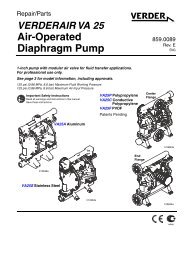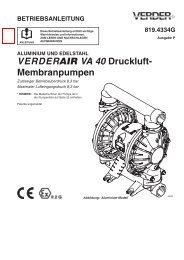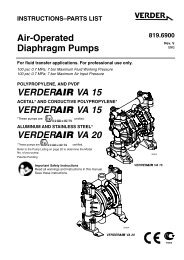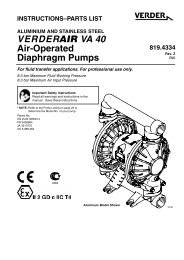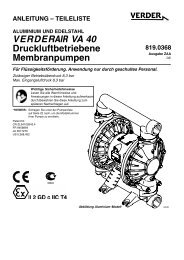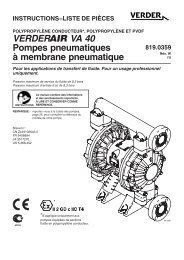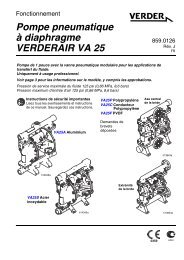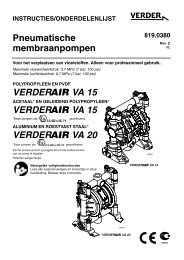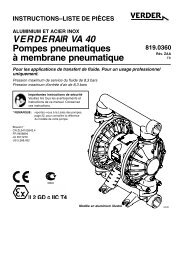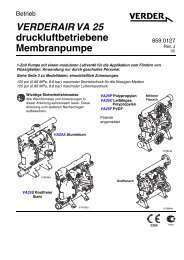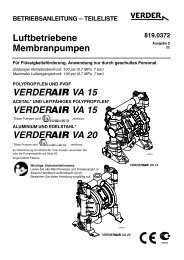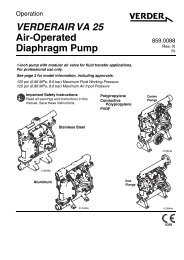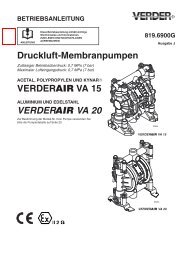Create successful ePaper yourself
Turn your PDF publications into a flip-book with our unique Google optimized e-Paper software.
Installation<br />
<strong>Air</strong> Exhaust Ventilation<br />
Warning<br />
FIRE AND EXPLOSION HAZARD<br />
Be sure to read FIRE OR EXPLOSION<br />
HAZARD and TOXIC FLUID HAZARD on<br />
page 3, before operating this pump.<br />
Be sure the system is properly ventilated for<br />
your type of installation. You must vent the<br />
exhaust to a safe place, away from people,<br />
animals, food handling areas, and all sources<br />
of ignition when pumping flammable or hazardous<br />
fluids.<br />
<strong>Diaphragm</strong> failure will cause the fluid being<br />
pumped to exhaust with the air. Place an appropriate container<br />
at the end of the air exhaust line to catch the fluid.<br />
See Fig. 6.<br />
The air exhaust port is 3/8 npt(f). Do not restrict the air exhaust<br />
port. Excessive exhaust restriction can cause erratic<br />
pump operation.<br />
To exhaust to a remote location:<br />
1. Remove the muffler (11) from the pump air exhaust port.<br />
Warning<br />
PRESSURIZED EQUIPMENT HAZARD<br />
To reduce the risk of serious eye injury<br />
from ice particles, never operate the pump<br />
with the air exhaust port open. Ice may<br />
form during pump operation, and ice particles<br />
will be ejected from the port along with the exhaust<br />
air. If the muffler (11) is removed, always connect an air<br />
exhaust hose to the exhaust port.<br />
2. Install an electrically conductive air exhaust hose (X) and<br />
connect the muffler to the other end of the hose. The<br />
minimum size for the air exhaust hose is <strong>10</strong> mm ID. If a<br />
hose longer than 4.57 m is required, use a larger diameter<br />
hose. Avoid sharp bends or kinks in the hose.<br />
3. Place a container (Z) at the end of the air exhaust line to<br />
catch fluid in case a diaphragm ruptures. If the fluid is<br />
flammable, ground the container. See Fig. 6.<br />
VENTING EXHAUST AIR (Submerged Installation Shown)<br />
In a submerged installation (as shown), all wetted and non-wetted pump parts must be<br />
compatible with the fluid being pumped.<br />
Z<br />
11<br />
Fig. 6<br />
X<br />
01445A<br />
819.0154 9



